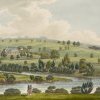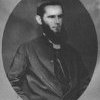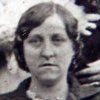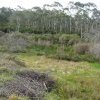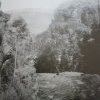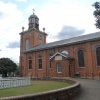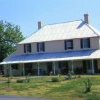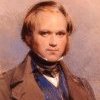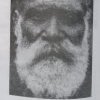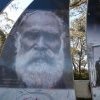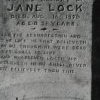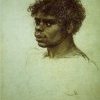1830s
1830
Sydney Gazette 9th Jan page 3 Annual Conference with the Natives.: “The weather on the morning of Wednesday last, being rather unfavourable, the number of visitors to Parramatta, to witness the interesting scene which is annually presented at the conference held by His Excellency the Governor with the native Chiefs and tribes, was not so numerous as on former occasions. About 12 o'clock, the Governor, attended by the Hon. Alexander McLeay, the Venerable the Arch Deacon, Colonel Shadforth, Captain Dumaresque, the Rev. Samuel Marsden, the Rev. W. Cowper, the Rev. C. P. N. Wilton, the Rev. Thomas Hassall, Major Innes, Lieut. Darling, W.Lithgow, Esq. W. Lawson, Esq. Major Lockyer &C, proceeded to the Market-place, where 269 Aboriginal natives, including women and children, were assembled to partake of the usual treat of roast beef and pudding, &c, with which they were plentifully supplied, together with a reasonable quantum of grog. The ground was roped in for the occasion, and decorated with a profusion of shrubs. The chiefs of the tribes were noticed in the kindest manner by His Excellency, who placed a badge of distinction on the neck of one of them, and personally took care that their wants were supplied with everything which had been provided for the feast. At the conclusion of the repast, blankets, hats, handkerchiefs, jackets, trousers, and tobacco were plentifully distributed; and after The Governor and his immediate attendants had retired, Lieut. Darling prevailed on the blacks to indulge the spectators with a dance, or corrobora, which ended the day's amusements. Particular notice was taken of two Aboriginal native boys and a girl who were brought up in the house of the Rev. W. Walker at Parramatta, and accompanied him to the meeting. These children have made a very creditable progress in reading and writing, and are excellent house servants, a proof that the intellect of the natives is not so debased as to be incapable of cultivation if judicious measures be adopted.”
1831
1832
Darug child, Mary Thomas is born in the Black Town road camp at Freemans Reach (different from Blacktown on Richmond Road); a 1832 birth certificate names a father as Henry Styles and mother as Mary Thomas. However her marriage cert some 30 years later asserts that her parents are Maria Byrnes and Henry Thomas. Henry Stiles is an assistant curate at St Matthew's Church of England Windsor. He becomes the Master of the Parramatta Orphan School. The Darug Byrnes family live at Bells Road, Richmond . A John Thomas (Aboriginal) is born in 1837 and is from the Cowpastures tribe in Camden area.
William Bartle, convict, born Leeds Yorkshire 1810, marries Mary Ann Thomas who is a servant. (v. 3199/1862). On marriage, she is 38years old and he is 58 years old. They have daughter, Mary Bartle born 1868/1946 in Eastern Creek. Mary Ann had two former defacto husbands and 2 boys and 2 girls. These children were removed by the Benevolent society and then sent to the Randwick Home for destitute Children. Mary Ann and William Bartle had other children. Matilda, 1866, Martha, 1870 and William, 1871. Freeman’s Reach is closely associated with Sackville Aboriginal Reserve.
1833
Surveyor William Govett refers to ‘that part of the country where the Cascade Creek from the Weatherboard Inn joins the Cox River is called Godoomba’ (J. Smith, ‘New insights into Gundungurra Place names’, in H. Koch and L. Hercus, I Aboriginal Placenames, Aboriginal History and ANU EPress, 2009, p. 91).
1835
Backhouse: on the ‘South Creek Natives’: [The ‘South Creek’] people live on Charles Marsden’s property ‘Mamre’, often staying at the junction of South Creek and Eastern Creek. ‘In comparison with some other tribes, the South Creek Natives may be considered as half-domesticated, and they often assist in the agricultural operations of the settlers.”
He continues: ‘A few of the Natives...were, at one time, located upon a piece of the worst land in this part of the country, at a place, called Black Town. Here some of them raised grain, in spite of the sterility of the soil, at a time when they were unable to dispose of it.’ (Quoted, M. Martin, On Darug Land. An Aboriginal Perspective, 1988, p.80)
1836
Charles Darwin, on route to Bathurst, stays on the Nepean River, meeting a band of some 20 Koories. That night “a score of the black Aborigines pass by, ‘each carrying in their accustomed manner, among them spears and other weapons. By giving a leading young man a shilling, they were easily detained, and threw their spears for my amusement. They were all partly clothed, and several could speak a little English: their countenances were good-humoured and pleasant, and they appeared far from being such utterly degraded beings as they have usually been represented. In their own arts they are admirable. A cap being fixed at 30 yards distance, they transfixed it with a spear, delivered by their throwing-stick [woomera] with the rapidity of an arrow from the bow of a practised archer. In tracking animals or men they show such wonderful sagacity; and I heard of several of their remarks which manifested considerable acuteness. They will not, however, cultivate the ground, or build houses and remain stationary, or even take the trouble of tending a flock of sheep when given to them. Darwin, pp. 435-438.












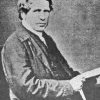

.thumbnail.jpg)
